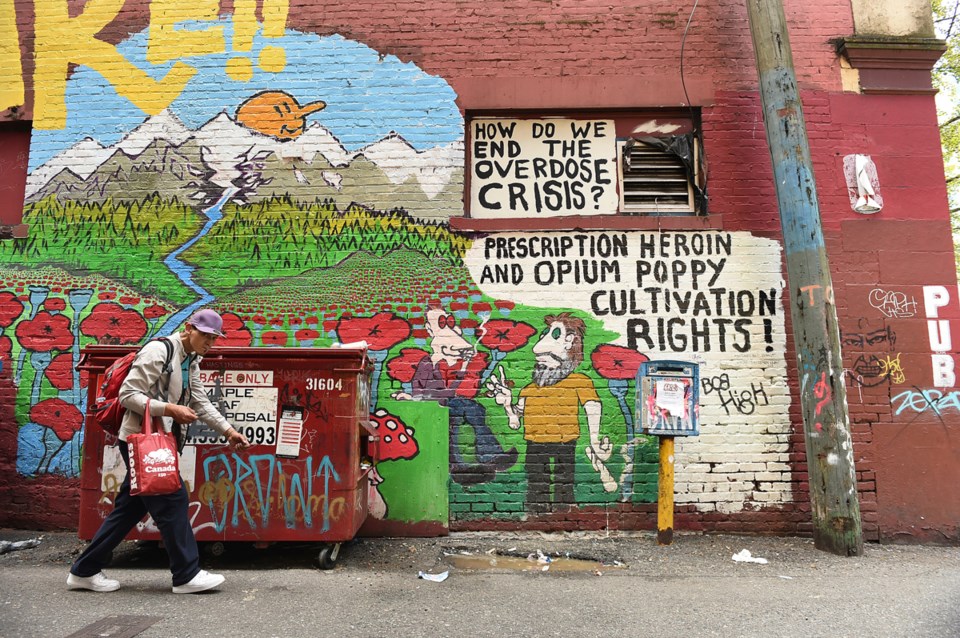It’s been a summer of major discontent in Vancouver’s Downtown Eastside. Seemingly endless amounts of ink has been spilled over the rampant problems in the neighbourhood, whether it’s opining over the tent city in Oppenheimer Park, or the Toronto Raptor who had his laptops stolen after foolishly leaving his bags exposed on the backseat of his rental, or the cry for help from the owners of the Patricia Hotel.
Even harsher criticism of the DTES has appeared on social media, including suggestions to “fence it off” and “bulldoze the whole place.” Some people will tell you to avoid the area at all costs.
What many critics fail to realize or admit is that the DTES is a community. Despite being in the vise-grip of a deadly health crisis, this is a neighbourhood where people know and look out for each other, and it is one in desperate need of normalizing, beyond government agencies.
I have frequented the DTES for more than 30 years. When Woodward’s closed down in 1993, it felt like a tipping point. I worked at 207 West Hastings at the time, and it seemed much more dangerous then for the average citizen or tourist when it came to violent street crime. Back then, the obvious street unrest stretched west to Homer Street. These days, the divide begins at Carrall Street.
Twenty-six years later, I still work downtown, and every day I frequent the banks, the bars, the grocery stores, the cafes and the restaurants of the DTES. And I talk to people. There’s a lot of humanity in the hood.
When challenging people’s criticism of area, I’ve been asked if I would send my kids on an errand in the DTES. My children are six and three, so I wouldn’t send them on an errand anywhere, but yes, my wife and I take our kids to the DTES. Coming from our home in Hastings-Sunrise, how else are we going to get to a movie at Tinseltown, or catch the bus to the Canucks game, see a show at the Firehall Theatre, pick up a pair of rubber boots at Army and Navy, or grab a bite at Tacofino, Save-On-Meats, or Nelson the Seagull?
Lee Snelgar has owned Nelson the Seagull, the bustling bakery and café at 315 Carrall St., since 2010. Over the last decade, she has witnessed what she calls both “change and stagnation.”
“What is happening in the DTES is mental health colliding with drugs,” summarizes Snelgar. “On whether this should stop people visiting the area, no, that would only hasten its decline, and in my opinion we need to continue to work to uplift the area and, more importantly, the individuals.”
When my wife and I are with our kids in the neighbourhood, I’ve seen the faces of some of the most hardened addicts crack into smiles when they look down at my children to say hello. One young woman leaning over the handlebars of a BMX was swearing like Sam Kinison. When she noticed my kids, she instantly checked herself and blurted out, “Oh! I’m so sorry!” Lesser manners have been shown at the Canucks game.
“We bring friends children, family, and pets here all the time,” says Snelgar. “I walk home at all hours, and we have very meaningful friendships with a number of residents in the DTES. That is not to say I haven’t seen a crazy uptick of drug use over the years, but that is hardly surprising given that many people on the Downtown Eastside should be in assisted mental health living.”
Coco Culbertson is a senior manager at the Portland Hotel Society andhas been a harm reduction champion and community leader in the DTES for more than 15 years.
“Personally, I can’t stomach any more trashing of our city’s poorest neighbourhood,” says Culbertson. “The DTES is a complex and beautiful community with socio-economic and cultural diversity. It’s probably the most colourful neighbourhood in Vancouver. But obviously things are bloody rough. This is what violent poverty looks like.”
Our DTES needs Vancouverites to care for it by frequenting it. By being there. By walking its streets. By supporting its citizens and businesses, not by fear mongering or creating division — something Snelgar is very familiar with.
“I’m from South Africa and therefore have what some would call a hardier constitution for what one would qualify as dangerous,” she explains. “Although, ironically, Canadians seem to have a much larger tolerance to ignore rather severe human suffering. Perhaps it’s our aversion to conflict and fear of offending that has let this particular area and treatment of mental health be so utterly shameful. We all deserve to be seen and heard and treated as human.”
See you in the neighbourhood.



